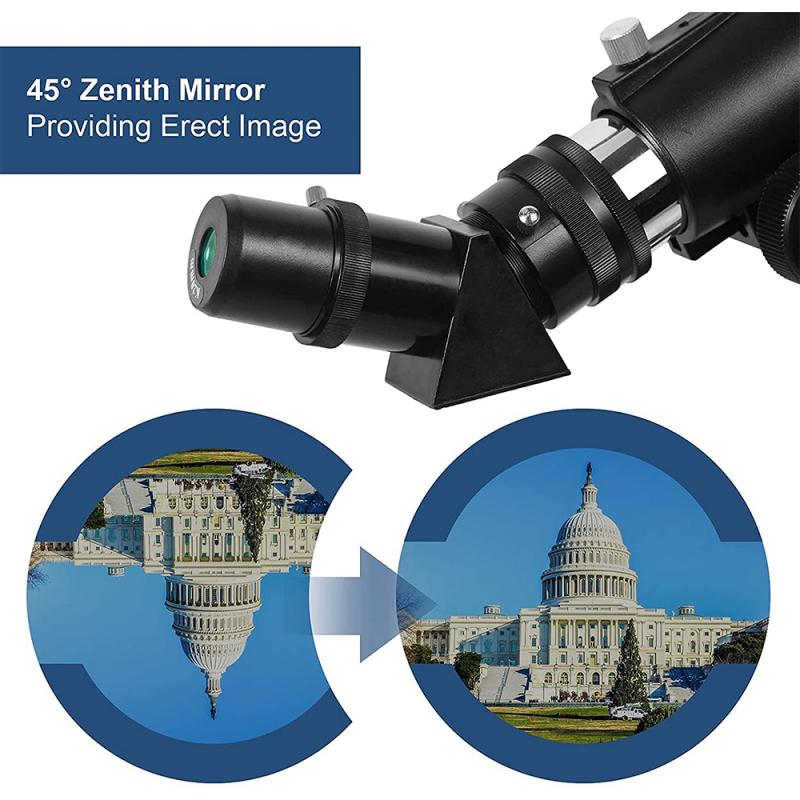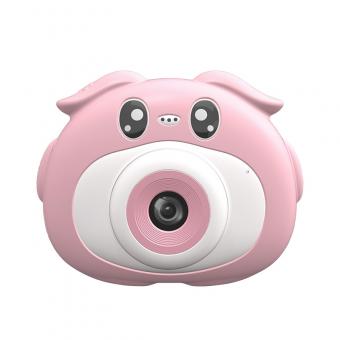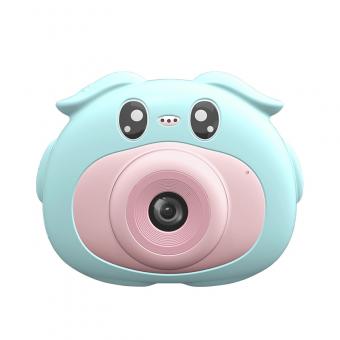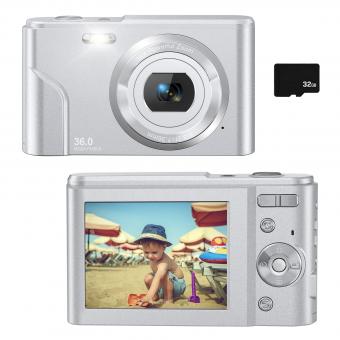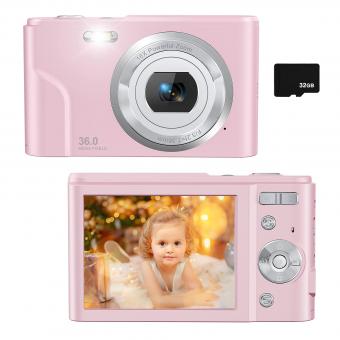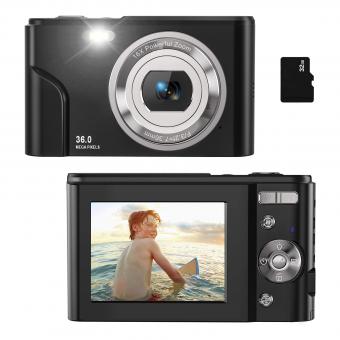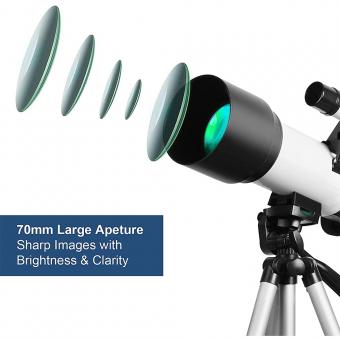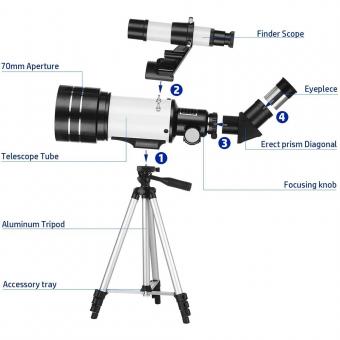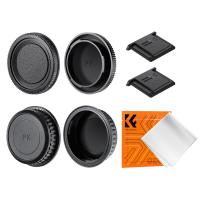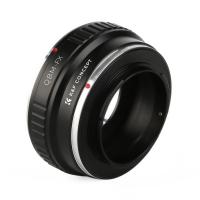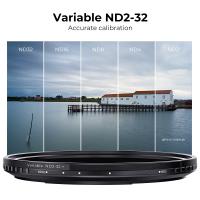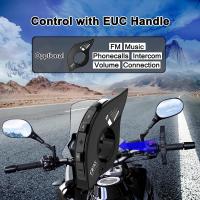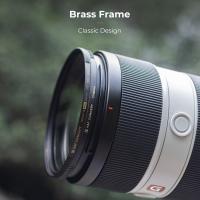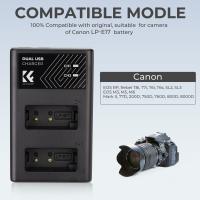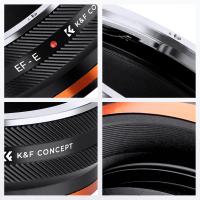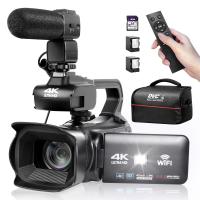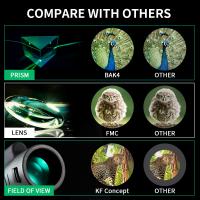How To Use A Telescope For Kids ?
Using a telescope can be a fun and educational experience for kids. To use a telescope, start by setting it up on a stable surface, such as a tripod. Next, adjust the telescope's focus by turning the focus knob until the image appears clear. Point the telescope towards the object you want to observe, and use the telescope's slow-motion controls to track the object as it moves across the sky. It's important to be patient and take your time to locate and observe objects through the telescope. Additionally, it can be helpful to learn about the different types of telescopes and their features to enhance your observing experience. Remember to always handle the telescope with care and follow any safety instructions provided by the manufacturer.
1、 Telescope Basics: Understanding the parts and functions of a telescope.
Telescope Basics: Understanding the parts and functions of a telescope.
Telescopes are fascinating tools that allow us to explore the wonders of the universe. They can be a great educational tool for kids, sparking their curiosity and helping them learn about astronomy. Here is a guide on how to use a telescope for kids, along with an overview of its parts and functions.
1. Set up the telescope: Start by finding a suitable location with minimal light pollution. Set up the tripod and attach the telescope securely.
2. Familiarize with the parts: Telescopes consist of several important parts. The main tube holds the lenses or mirrors, the eyepiece is where you look through, and the mount allows you to move the telescope.
3. Align the finder scope: The finder scope is a smaller telescope attached to the main one. Align it by pointing it at a distant object and adjusting the screws until it matches the view in the main telescope.
4. Focus the telescope: Use the focusing knobs to adjust the focus until the object you are observing appears clear and sharp.
5. Observe the night sky: Start with easy-to-spot objects like the moon or bright planets. Use star charts or smartphone apps to locate interesting celestial objects.
6. Learn about magnification: Telescopes have different eyepieces that provide varying levels of magnification. Experiment with different eyepieces to see how they affect the view.
7. Take care of the telescope: Teach kids to handle the telescope with care, avoiding touching the lenses or mirrors and keeping it protected when not in use.
It's important to note that using a telescope requires patience and practice. Encourage kids to explore and ask questions, fostering their curiosity about the universe. Additionally, consider joining a local astronomy club or attending stargazing events to enhance their learning experience.
In recent years, there have been advancements in technology that have made telescopes more accessible and user-friendly for kids. Some telescopes now come with built-in computerized systems that can automatically locate celestial objects, making it easier for young astronomers to navigate the night sky. These features can enhance the overall experience and make it more enjoyable for kids.
Remember, the key is to make astronomy and telescope usage a fun and interactive experience for kids. By providing them with the necessary knowledge and guidance, they can develop a lifelong passion for exploring the wonders of the universe.
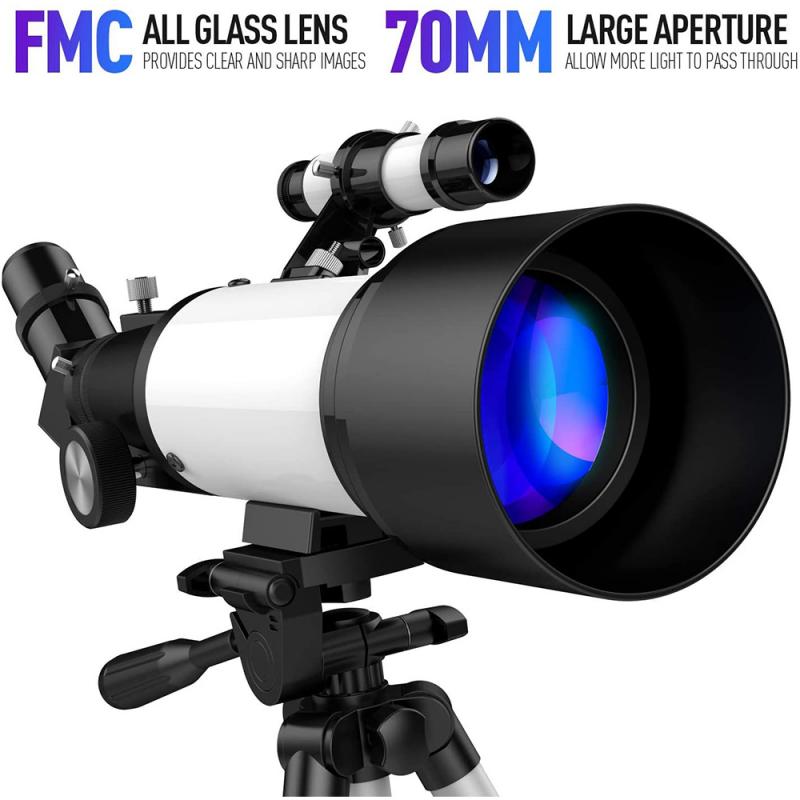
2、 Observing the Night Sky: Identifying celestial objects and constellations.
Observing the Night Sky: Identifying celestial objects and constellations.
Using a telescope can be an exciting and educational experience for kids. It allows them to explore the wonders of the night sky and discover celestial objects and constellations. Here's a step-by-step guide on how to use a telescope for kids:
1. Set up the telescope: Start by assembling the telescope according to the manufacturer's instructions. Make sure it is stable and securely mounted on a tripod.
2. Familiarize with the telescope: Teach kids about the different parts of the telescope, such as the eyepiece, focus knob, and finder scope. Explain how each part works and how to adjust them.
3. Choose a target: Encourage kids to start by observing the moon, as it is a bright and easily recognizable object. Point the telescope towards the moon and adjust the focus until it appears clear and sharp.
4. Identify constellations: Once kids are comfortable observing the moon, introduce them to different constellations. Use a star chart or a smartphone app to help identify constellations in the night sky. Teach them about the stories and myths associated with each constellation.
5. Locate celestial objects: As kids become more experienced, they can start exploring other celestial objects such as planets, stars, and galaxies. Use a star chart or app to locate these objects and guide the telescope towards them.
6. Observe and learn: Encourage kids to spend time observing each object and discussing what they see. Help them understand the different features and characteristics of each celestial object.
It's important to note that the latest point of view in astronomy is constantly evolving as new discoveries are made. Encourage kids to stay curious and updated with the latest scientific findings through books, documentaries, and online resources.
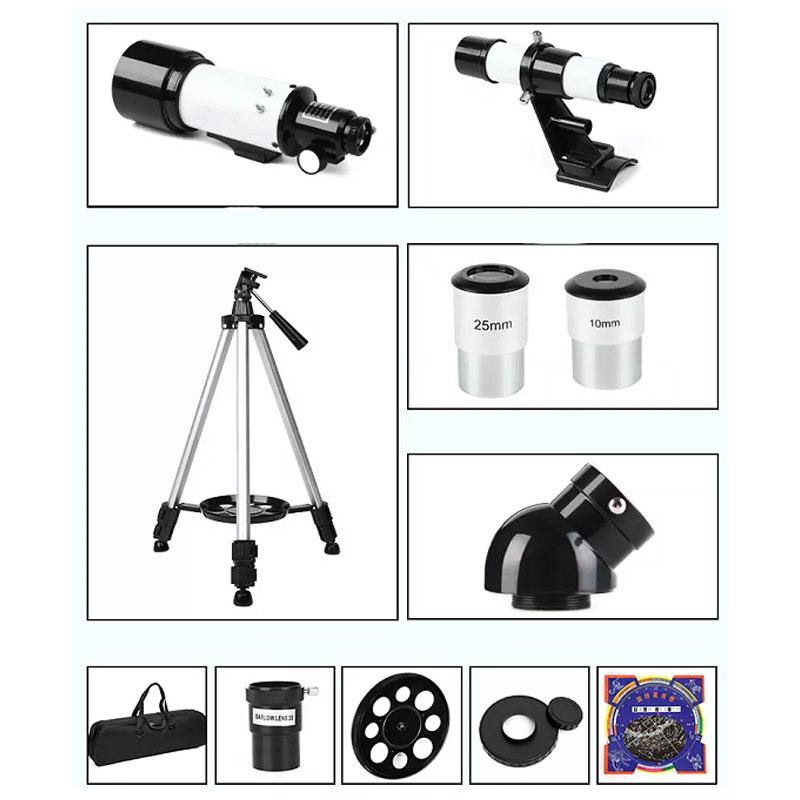
3、 Adjusting the Telescope: Focusing, magnification, and aligning the viewfinder.
Adjusting the Telescope: Focusing, magnification, and aligning the viewfinder.
Using a telescope can be an exciting and educational experience for kids. It allows them to explore the wonders of the night sky and observe celestial objects up close. However, it is important to know how to properly adjust the telescope to get the best viewing experience.
The first step in using a telescope is to set it up on a stable surface, such as a tripod. Once the telescope is set up, it's time to adjust the focus. Start by looking through the eyepiece and turning the focus knob until the image becomes clear. This may take some trial and error, so be patient and make small adjustments until the image is sharp.
Next, you can adjust the magnification of the telescope. Most telescopes come with different eyepieces that offer varying levels of magnification. Start with a lower magnification eyepiece and gradually increase it to get a closer view of the object you are observing. Keep in mind that higher magnification may result in a dimmer image, so it's important to find a balance between magnification and image quality.
Aligning the viewfinder is another crucial step. The viewfinder is a small scope attached to the main telescope that helps you locate objects in the sky. To align it, choose a distant object, such as a tree or a building, and center it in the viewfinder. Then, adjust the viewfinder's screws or knobs until the object is also centered in the main telescope's eyepiece. This will ensure that you are looking at the same object through both the viewfinder and the main telescope.
It's worth noting that using a telescope requires patience and practice. Encourage kids to experiment with different settings and objects to observe. Additionally, it can be helpful to consult a star chart or astronomy guide to find interesting celestial objects to observe. With time and practice, kids can develop a deeper understanding and appreciation for the wonders of the universe.

4、 Telescope Safety: Proper handling and precautions for kids using telescopes.
Telescope Safety: Proper handling and precautions for kids using telescopes.
Telescopes can be a fascinating tool for kids to explore the wonders of the night sky. However, it is important to ensure that children use telescopes safely and responsibly. Here are some guidelines to help kids use telescopes safely:
1. Adult supervision: Children should always be supervised by an adult when using a telescope. This ensures that they are using the telescope correctly and safely.
2. Proper setup: Teach kids how to set up the telescope correctly, including assembling the tripod and attaching the telescope securely. Follow the manufacturer's instructions carefully.
3. Sun safety: Never look directly at the sun through a telescope, as it can cause permanent eye damage. Teach children to never point the telescope towards the sun, even when using filters.
4. Sturdy base: Ensure that the telescope is placed on a stable and level surface to prevent it from tipping over.
5. Proper handling: Teach kids to handle the telescope with care, avoiding rough movements or sudden jerks. This helps prevent damage to the telescope and ensures a clear view.
6. Clean lenses: Encourage children to keep the lenses clean by using a soft cloth or lens cleaning solution. This helps maintain the quality of the images seen through the telescope.
7. Storage: Teach kids to store the telescope in a safe and dry place when not in use. This protects it from dust, moisture, and potential damage.
8. Respect for wildlife: Remind children to be mindful of their surroundings and avoid disturbing wildlife while using the telescope outdoors.
9. Latest point of view: With the advancements in technology, there are now telescopes specifically designed for kids that are lightweight, easy to use, and have built-in safety features. These telescopes often come with kid-friendly instructions and educational materials to enhance the learning experience.
Telescope safety is crucial to ensure that kids can enjoy the wonders of the night sky without any harm. By following these guidelines and using age-appropriate telescopes, children can have a safe and enjoyable experience exploring the universe.
